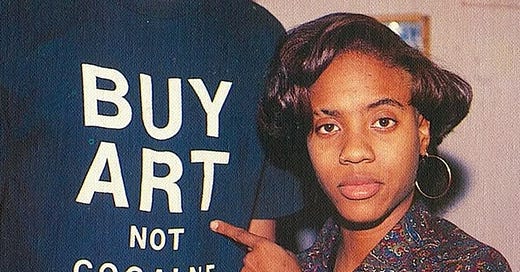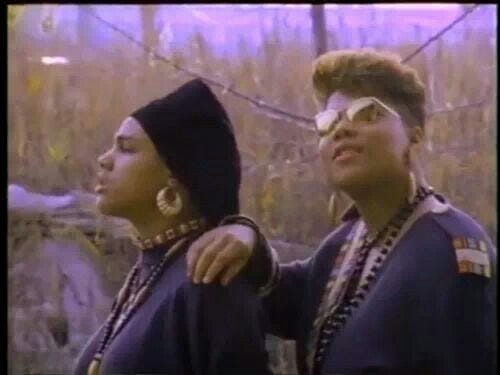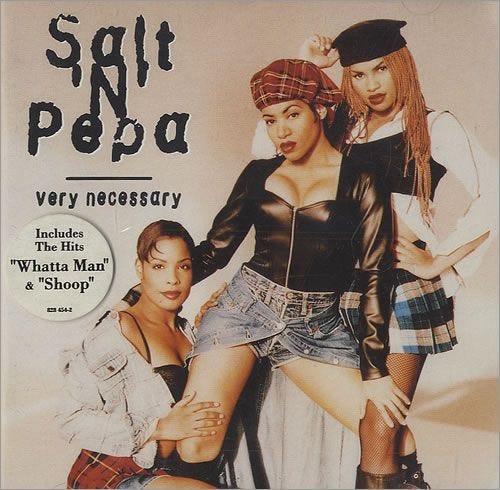Black Woman Rappers: Historical progression from streetwear to sexy
Hiii my fairies;)) This is a two part gender studies essay, I wrote, focusing on respectability politics and sexualization in the history of Black women rappers. Enjoy;)
Hip-hop has become a global industry with a worldwide influence, speculative to begin in 1973 at a Bronx, New York party, to performing on the world's biggest stages. This music phenomenon began as a way for Black and Brown people in lower economic communities to cope with their reality amidst the war on drugs. Over time the genre transformed into an art form and a path to escape their lifestyle. Hip-hop started as a male-dominated art form that glorifies the idea of Black masculinity and upholds traditional gender roles, with women being dehumanized and sexualized in rap songs. However, Black women have pushed back against the patriarchal standard in Hip-hop and used the art form as a way to talk about issues affecting women. From the lyrical skills of MC Lyte to the sexual freedom of Megan thee Stallion, Black female rappers have evolved. During this time, Black female rappers have drastically changed from “one of the boys” to sexual liberators.
This essay is divided into two parts focused on Black female rappers by generation, with the prominent rappers from the 1980s to late 1990s as the older generation, whereas Black female rappers from the 2000s to the present day are the younger generation. The older generation of Black female rappers were pioneers and shaped the genre in their own style. They used fashion, storytelling, and personality to shine in a male-dominated industry. However, these pioneers shied away from explicit, sexual lyrics and personality. Whereas the young generation embraced their sexuality in their lyrics and personas. The two generations operated in the same patriarchal industry, however, the younger generation has brought a new freedom to Hip-hop. This essay will examine societal aspects involved with the older and younger generation. Also, will raise the question of why the younger generation of Black female rappers is more sexually liberated than their founders. By exploring both generations of Black female rappers, the notion of liberation and individual expression in music is challenged by the societal norms of a specific time.
In the 1980s and 1990s of Hip-hop, rappers were focused on their craft and how to gain respect as an artist. During this time, Black female rappers were looked down upon because of their gender. Since they were women, they had to prove themself as a rapper. These women were tested by their crew whether they deserved the spotlight. This gendered initiation process created a generation of hustler and talented Black female rappers such as Mc Lyte, Queen Latifah, and Salt N’ Pepa. These women defied the odds and proved to a masculine culture they were talented enough to be a rapper, and that their womanhood wasn’t something to be ashamed of. “In the late ’80s and early ’90s, female hip-hop artists were known for their victorious flow, citing lyrics that promote female empowerment, respect (specifically the rejection of the “bitch-persona”) and embracing the original nature of the black women as royalty.”1
When the pioneers of Black female rap were given their chance to shine, they presented the best image of themselves and their womanhood. MC Lyte, the first female rapper to release a studio album, crafted her image as the girl next door and one of the boys. Through the fashion and lyrics, MC Lyte presented herself with a focus on her talent and charming demeanor. Her lyrics were about boys and the common relationship struggles during that time. She wasn’t a threat to other women and didn’t provide men access to her body. During that time, most female rappers wore streetwear and baggy clothing, only showing their femininity through accessories and hairstyles. This diminishing of their femininity could be a form of conforming to the masculine nature of hip-hop.
Pinterest User RixxRude
After Mc Lyte rose to fame in the 80’s, Queen Latifah was introduced to hip-hop. When she started her career, Queen Latifah embodied the spirit of an African Queen and militant persona. Her voice was a powerful call to attention and demanded listeners to pay attention as she rapped along to the beat.
On her first album, All Hail the Queen, Latifah was dressed in a black militant uniform, with an African head wrap and stoic expression. She was the symbolization of Black women's empowerment and finding strength through the Black individual's African culture. A prime example of Latifah’s advocacy for women's empowerment is her record, Ladies First. In the 1989 song, Latifah promotes women being in positions of power and having the same treatment as men. However, through the imagery of the music video, Latifah is illustrating she is specifically talking about Black women, as photos of Black women abolitionists and civil rights leaders are shown. By choosing to display Black women in her music video, Latifah put Black women at the frontlines of a call to action feminist anthem. Robin Roberts in her article “Ladies First: Queen Latifah’s Afrocentric Feminist Music Video”, states that “being a feminist does not mean abandoning her [Latifah’s] African heritage; instead, it becomes an additional source of strength and power.”
Pinterest User Tonya Fleming
In the early 90s, this idea of empowering women and embracing African culture was seen as a threat to the Black identity. The idea of feminism, because of the first and second-wave feminist exclusion of Black women, was seen as “ too white, too middle class, and too hostile towards black men”. Latifah never claimed to be a feminist, but she didn’t allow the exclusion of feminism in the Black community to deter her message. Unlike MC Lyte, Latifah was viewed as a motherly and powerful figure, even though at the time of her first album she was 21. Since Latifah has a full figure, fans assigned her to the stereotypical notion of mammy, a Black woman who is strong and nurturing. Latifah was a powerful force for the Black female rap lineage, as she began the conversation of Black women speaking up about issues in the community. She reinforced the idea of Black people as royalty and treating each other with respect. However, at the beginning of her career, Latifah had to lessen her empowering clothing and attitude, because she was scared of intimidating listeners. In a way to present herself as a welcoming artist, Latifah had to change her persona into a more feminine light, as her militant style was masculine and not “welcoming” for a Black female artist. This circumstance highlights the contradiction of a Black female rapper's identity, as Latifah had to find the balance of both masculine and feminine to retain her respect as a rapper.
Pinterest User Sadie Hunter
In contrast with MC Lyte and Queen Latifah, Salt-N-Pepa was a hip-hop phenomenon that created the sexual liberation foundation for the younger generation. Salt-N-Pepa was the first all-female rap group, unlike MC Lyte's unisex style, they adopted a style of loud colors and Afrocentric patterns. They didn’t diminish their womanhood and instead intertwined streetwear with the glamor of femininity. Salt-N-Pepa dared to express their femininity and demanded the men in the hip-hop industry to acknowledge their presence. They also began incorporating lyrics about sex and men, with a storytelling aspect. In their famous song Push it, they never explicitly explain what “push it” means but provide ad-libs and dance moves to answer the question. This form of Black female rap was seen as a game changer since Black women were not rapping about their sex lives. Women were seen as emotional and should focus on the feelings of love. But Salt-N-Pepa created the foundation that Black women have sex and want to talk about it. Another popular song “Whatta Man,” features the group talking about men they find attractive and displaying men under an objectifying lens. This turn of events created a dynamic where men could visualize how their songs viewed women. Salt-N-Pepa created the foundation for Black female rappers to begin unraveling their sexuality and confronting men.
The older generation of Black female rappers chose different forms of womanhood to focus their artistry. MC Lyte introduced Black women to hip hop, with her raps about the typical relationship problems and women’s thoughts about men. Queen Latifah introduced Black women's empowerment and the strength of a community. She focuses on the dynamic of womanhood that is strong, yet doesn’t deserve the harassment of men. Instead of leaning into stereotypical views of femininity, Latifah made herself unique by holding womanhood to royalty. Salt-N-Pepa broke the glass ceiling and allowed the audience to examine Black women’s sexuality. They gave Black women the chance to celebrate their sexuality. Also, they showed women how being a rapper doesn’t take away the performance of womanhood. When women began rapping in hip-hop, they believed they had to dress and perform as men. Although they showed their womanhood in small manners, they adopted the casual streetwear and rap style of men. Whereas Salt-N-Pepa was goofy and lustful, they were women embodying rap. The older generation of Black female rappers believed they had to mimic the men in hip-hop, because of the respectability politics surrounding them as Black women. “Respectability politics refers to the policing of fellow members of the same marginalized group in order to create a more positive sentiment towards that group.”2
Keep reading with a 7-day free trial
Subscribe to BritDaFairy’s Substack to keep reading this post and get 7 days of free access to the full post archives.






